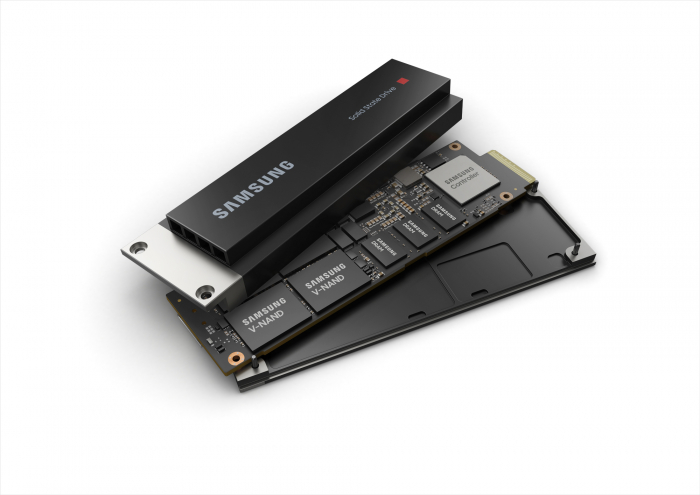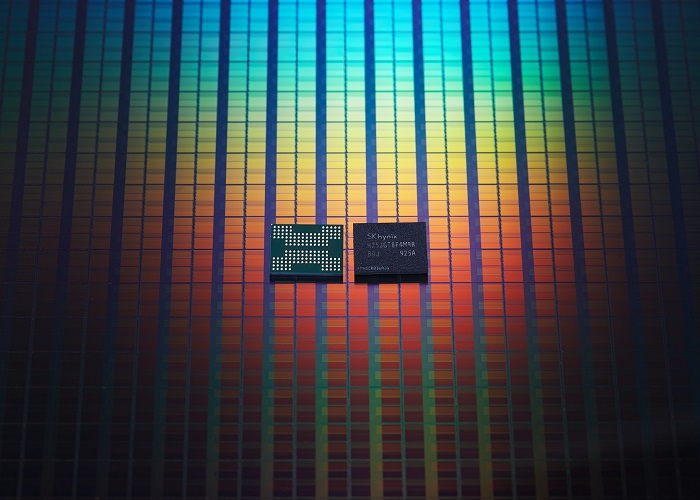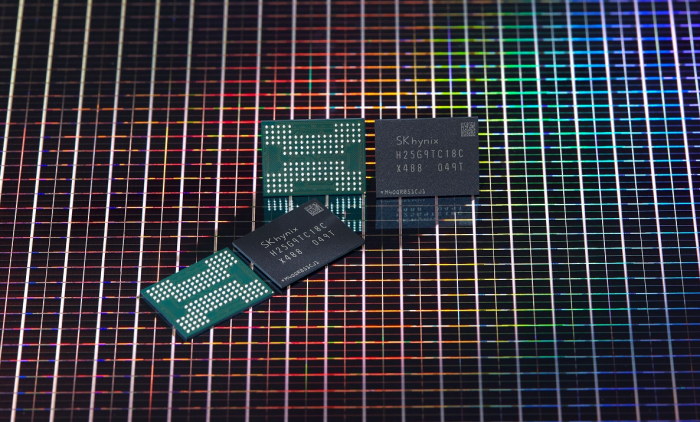Semiconductors
Samsung, SK Hynix ahead of rivals in 200-plus-layer NAND chips
The Korean chipmakers speed up their transition to higher-density chip output to widen tech lead over rivals
By Feb 04, 2022 (Gmt+09:00)
3
Min read
Most Read
LG Chem to sell water filter business to Glenwood PE for $692 million


KT&G eyes overseas M&A after rejecting activist fund's offer


Mirae Asset to be named Korea Post’s core real estate fund operator


StockX in merger talks with Naver’s online reseller Kream


Meritz backs half of ex-manager’s $210 mn hedge fund



Samsung Electronics Co. and SK Hynix Inc., the world’s two largest memory chipmakers, are expected to lead rivals in the industry’s transition to higher-density flash memory by unveiling 200-plus-layer NAND chips.
The two South Korean chipmakers have already acquired the necessary technology to manufacture such chips, with Samsung expected to unveil a 230-layer or possibly higher-density chip by the end of this year, industry sources said on Friday.
Crosstown rival SK Hynix is also said to be preparing to launch a 230-layer 4D NAND chip in early 2023, they said.
If realized, the two companies will become the industry’s firsts to commercialize 200-plus-layer NAND chips.
“Only a few NAND vendors have so far produced 176-layer chips. Going above 200-layers was regarded as something impossible until Samsung and SK Hynix said last year that they have the technology to do so,” said an industry official.
In July of 2021, Samsung said it made significant progress in developing a 200-layer vertical or V-NAND flash memory –the industry’s first – amid talk that its rivals are catching up fast with the South Korean chipmaker in technology advancement.
Company executives said at the time that it secured the technology to produce 200-layer and higher stacked eighth-generation V-NAND chips and is preparing for a production line ramp-up.

SAMSUNG EYES 1,000-LAYER CHIP
Jaihyuk Song, executive vice president and head of Samsung’s flash memory product and technology division, said in a contributing article to an in-house newsletter in June last year that Samsung’s V-NAND solutions eventually will evolve to feature over 1,000 layers.
SK Hynix Chief Executive Lee Seok-hee also said in an international semiconductor symposium last year that its technology will enable the production of 600-plus-layer NAND chips.
Analysts said the development of higher-density NAND chips was made possible by Samsung’s decision to incorporate its double-stack technology into its 176-layer 3D NAND manufacturing process.
Samsung, which produces 128-layer chips with a single-stack technology, can theoretically make 256-layer chips if its double-stack technology is applied, they said.
The tech giant, which aims to expand its presence in the growing solid-state drive (SSD) market, plans to begin its 176-layer 3D NAND chip output at its Pyeongtaek 2 line in the first half of this year.

KIOXIA, MICRON YET TO ENTER 200-LAYER RACE
SK Hynix, which acquired Intel Corp.’s NAND flash memory business for $9 billion in October 2020, is also stepping up efforts to transition into higher-density NAND memory to gain price competitiveness for its SSD products.
In 2019, Intel succeeded in developing a 144-layer NAND chip using its floating gate technology.
When combined with Intel’s NAND business, SK Hynix ranks second in the global NAND flash memory market with a 19.4% share, following market leader Samsung's 34.5% share as of the third quarter of 2021, according to market tracker TrendForce.
SK Hynix said in December 2020 that it developed 176-layer NAND flash memory, the industry’s highest-density chip, following in the footsteps of Micron Technology Inc., which unveiled the world’s first such chip a month earlier.
Japan’s Kioxia Corp., the world’s third-largest NAND player with a 19.3% market share, is said to be currently developing a 162-layer chip.
Micron, meanwhile, said earlier this year that it has kicked off volume shipments of its 176-layer QLC NAND SSDs.
Write to Su-Bin Lee at lsb@hankyung.com
In-Soo Nam edited this article.
More to Read
-

-
 M&AsSK Hynix wins China’s approval for $9 billion Intel NAND acquisition
M&AsSK Hynix wins China’s approval for $9 billion Intel NAND acquisitionDec 23, 2021 (Gmt+09:00)
4 Min read -
 SK Hynix to set up US NAND firm led by Intel’s senior vice president
SK Hynix to set up US NAND firm led by Intel’s senior vice presidentAug 06, 2021 (Gmt+09:00)
2 Min read -
 SemiconductorsChip supercycle view revives with DRAM, NAND prices at multi-year highs
SemiconductorsChip supercycle view revives with DRAM, NAND prices at multi-year highsJul 30, 2021 (Gmt+09:00)
2 Min read -
 EarningsSamsung works on industry’s first 200-layer NAND as its Q2 profit jumps
EarningsSamsung works on industry’s first 200-layer NAND as its Q2 profit jumpsJul 29, 2021 (Gmt+09:00)
3 Min read -
 SemiconductorsSK Hynix outplays Kioxia as world’s No.2 smartphone NAND flash maker
SemiconductorsSK Hynix outplays Kioxia as world’s No.2 smartphone NAND flash makerJul 11, 2021 (Gmt+09:00)
2 Min read
Comment 0
LOG IN


